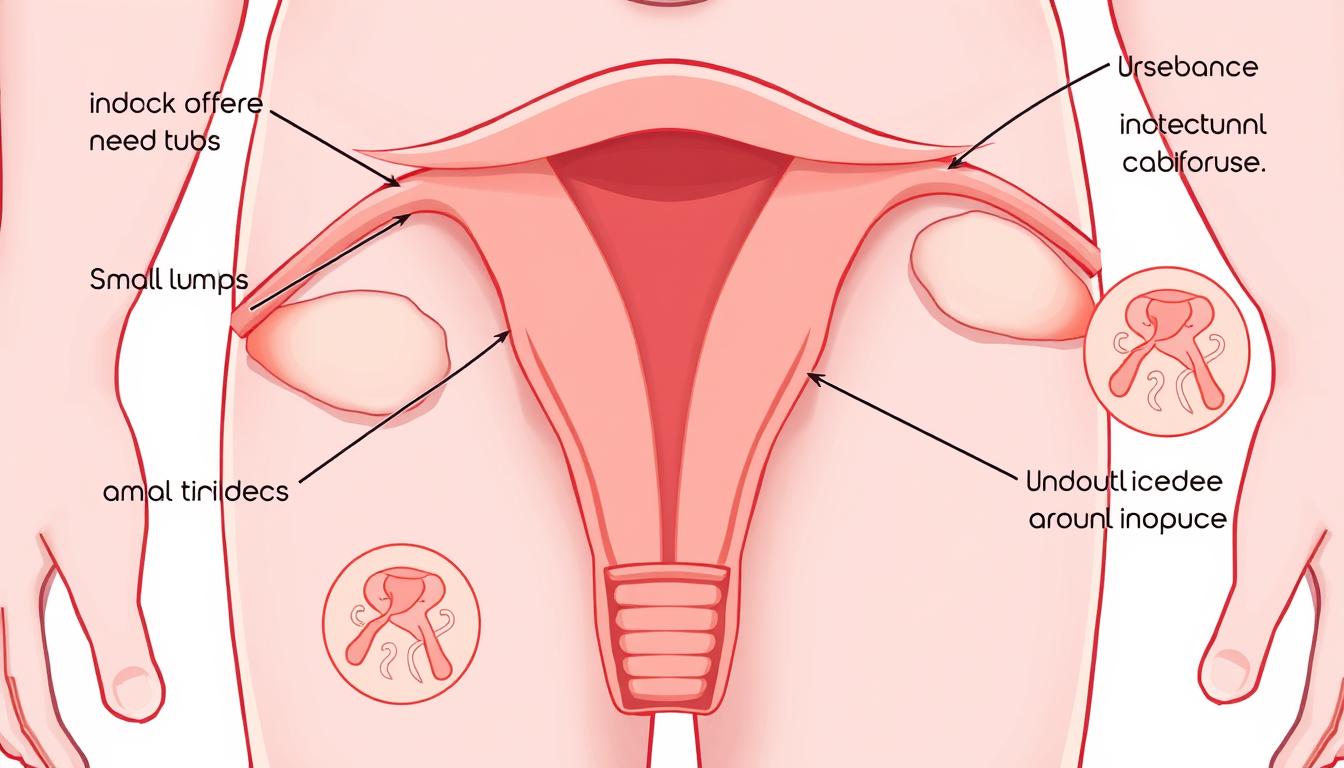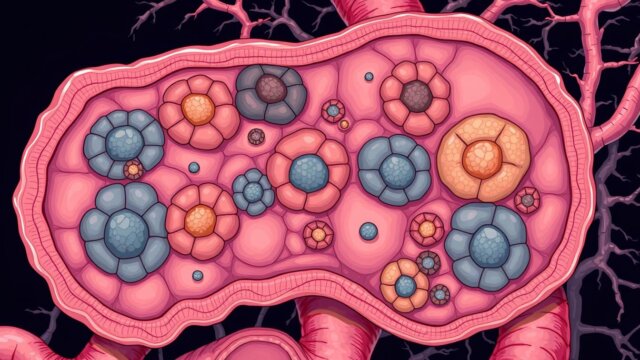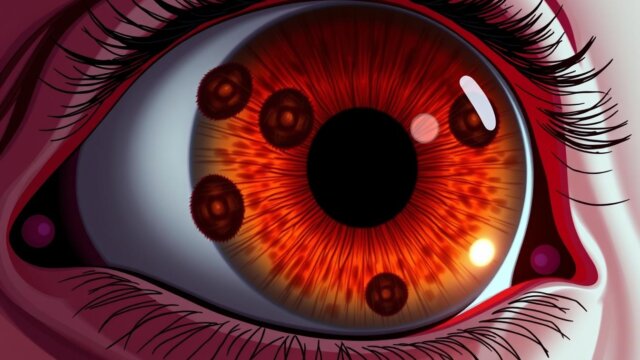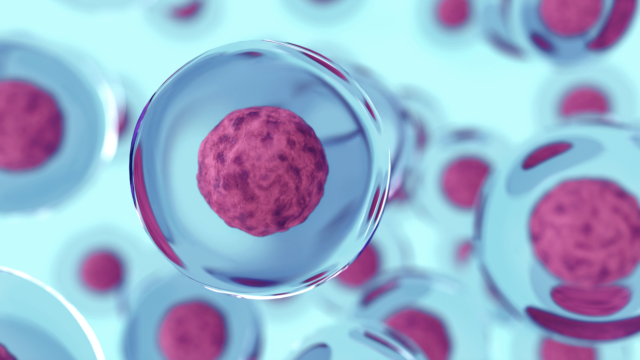FTC disclaimer: This post may contains affiliate links and we will be compensated if you click on a link and make a purchase.
Did you know most anal cancers come from human papillomavirus (HPV) infection? Anal cancer is a rare but serious disease. It affects the very end of the large bowel. Knowing the symptoms, causes, and treatments can help keep you healthy.
Anal cancer can cause many symptoms. These include bleeding from the anus or rectum, a lump near the anus, and pain. You might also feel itching, discharge, or changes in bowel habits. Some people with anal cancer don’t show any symptoms. If you notice any of these signs, see a doctor right away.
Key Takeaways
- Anal cancer is a rare but serious type of cancer that affects the end of the large bowel.
- Most anal cancers are caused by the human papillomavirus (HPV).
- Symptoms of anal cancer include bleeding, pain, itching, and changes in bowel habits.
- Early detection through screening tests is crucial for effective treatment.
- Treatment options include radiation therapy, chemotherapy, and surgery.
What is Anal Cancer?
Definition and Prevalence
Anal cancer is a type of cancer found in the anal canal. This is the short tube at the end of the rectum. It’s where stool leaves the body. The anal canal is about 1 1/2 inches long, or 4 centimeters.
It’s a growth of cells in the anal canal.
Anal cancer is rare, with 611 cases expected in the U.S. in 2024. It mostly hits older adults, with an average age of 67 at diagnosis.
In 2016, 8,000 adults in the U.S. got anal cancer, and 1,080 died from it. Women are more likely to get it, with two-thirds of cases being female. It makes up about 1-2% of all intestinal cancers.
The 55-64 age group is most affected. It’s less common than colorectal cancer, but cases are rising.
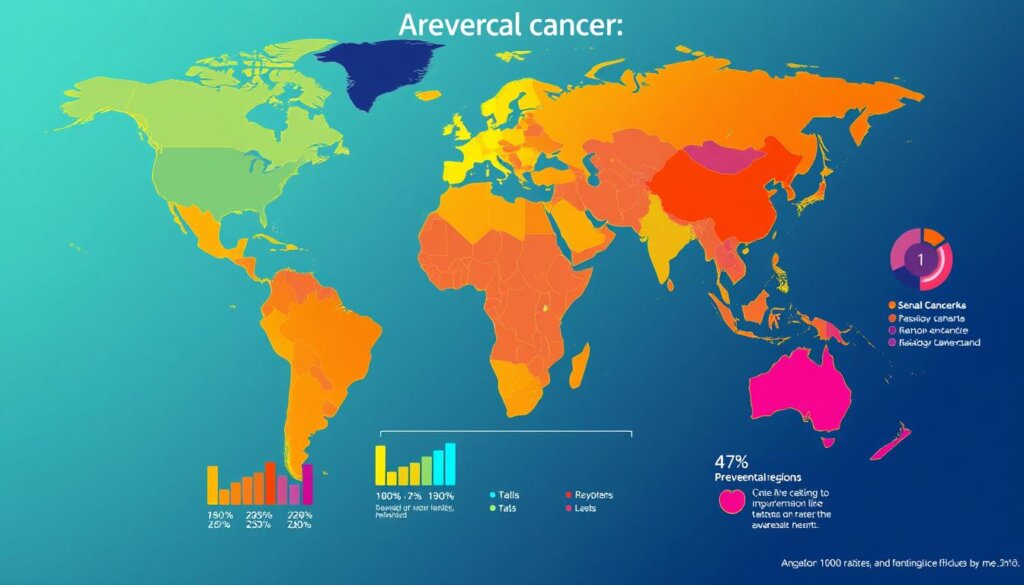
Symptoms and Warning Signs
Recognizing the Signs
Anal cancer is rare but has many symptoms to watch for. Look out for rectal bleeding or blood in the stool. Other signs include changes in bowel movements, discomfort, and a lump near the anus.
As cancer grows, symptoms get worse. You might feel a lot of pain, have a lot of bleeding, or lose weight without trying. Some symptoms, like bleeding, can also mean other things like hemorrhoids. So, seeing a doctor quickly is key.
The Moffitt Cancer Center has a special program for anal cancer. They focus on treating each patient in a way that works best for them. Their team works closely with patients to help them get better.
Symptom | Description |
|---|---|
Rectal Bleeding | Bright red blood in the stool or on toilet paper |
Blood in Stool | Visible blood mixed in with bowel movements |
Anal Pain | Discomfort or a feeling of pressure in the anal area |
Anal Mass | A lump or growth near the anus |
Anal Itching | Persistent, unexplained itching around the anus |
Frequent Bowel Movements | Changes in bowel habits, such as increased frequency |
Getting help early is key to beating anal cancer. With quick action, the five-year survival rate is 64%. This means better chances for patients.
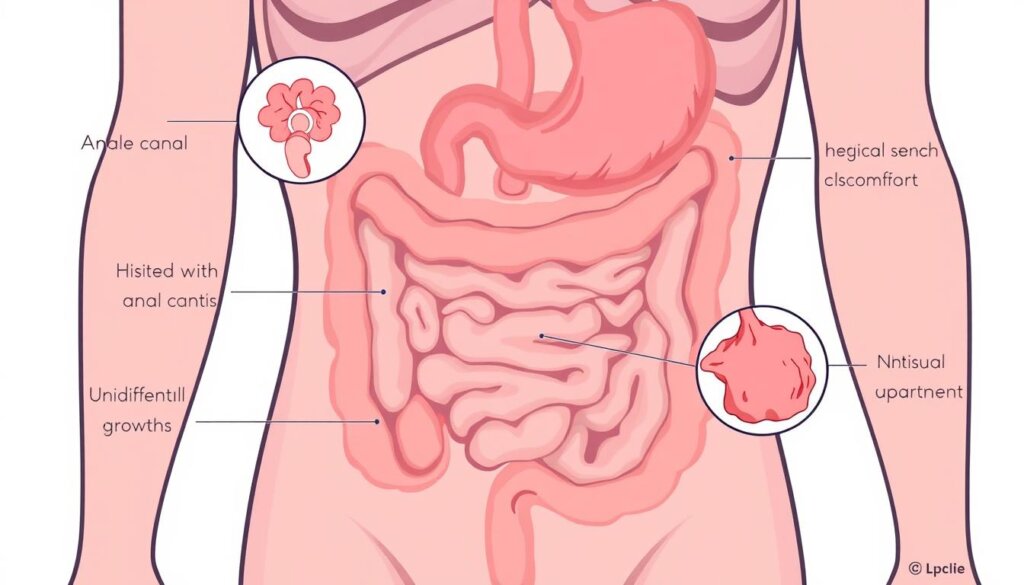
“Anal cancer is a relatively rare malignancy, but the symptoms can be similar to more common conditions like hemorrhoids. It’s important for anyone experiencing persistent or concerning changes in the anal area to seek medical attention for proper evaluation and diagnosis.”
The article stresses the importance of early diagnosis and treatment plans for anal cancer patients. By catching symptoms early and getting the right treatment, people can do much better.
Causes and Risk Factors
The main cause of anal cancer is the human papillomavirus (HPV), a virus spread through sex. HPV can change the cells in the anal canal, leading to cancer. Certain types of HPV, like HPV-16, are especially linked to anal cancer. People with anal warts caused by HPV are more at risk.
Other big risks include having many sex partners, doing anal sex, and a weak immune system. This can be from HIV or certain medicines. Women who’ve had other HPV cancers, like cervical or vaginal, are also at higher risk. Smoking also raises the risk, especially with more years of smoking.
Risk Factor | Impact on Anal Cancer Risk |
|---|---|
HPV Infection | Most squamous cell anal cancers are linked to HPV. Around 90% of anal cancer cases are HPV-related. |
History of Cervical, Vaginal, or Vulvar Cancer | Increased risk of anal cancer, likely due to HPV infection. |
HIV Infection | HIV-infected individuals have a much higher risk of anal cancer compared to those not infected. |
Smoking | Increases the risk of anal cancer, with higher pack-year history correlating to a higher risk. Some studies suggest smoking increases the risk of anal cancer. |
Weakened Immune System | People with reduced immunity, such as those with AIDS or organ transplant recipients on immunosuppressive drugs, have heightened rates of anal cancer. |
Multiple Sexual Partners | The risk of anal cancer increases with multiple sex partners, particularly impacting men who have sex with men. |
Receptive Anal Sex | The risk of anal cancer increases with receptive anal sex, particularly impacting men who have sex with men. |
Anal cancer is more common in White women and Black men. Also, about 25% of people with anal cancer in the UK are over 75. The UK’s HPV vaccine program aims to prevent cancers like cervical and anal in kids aged 12 or 13.
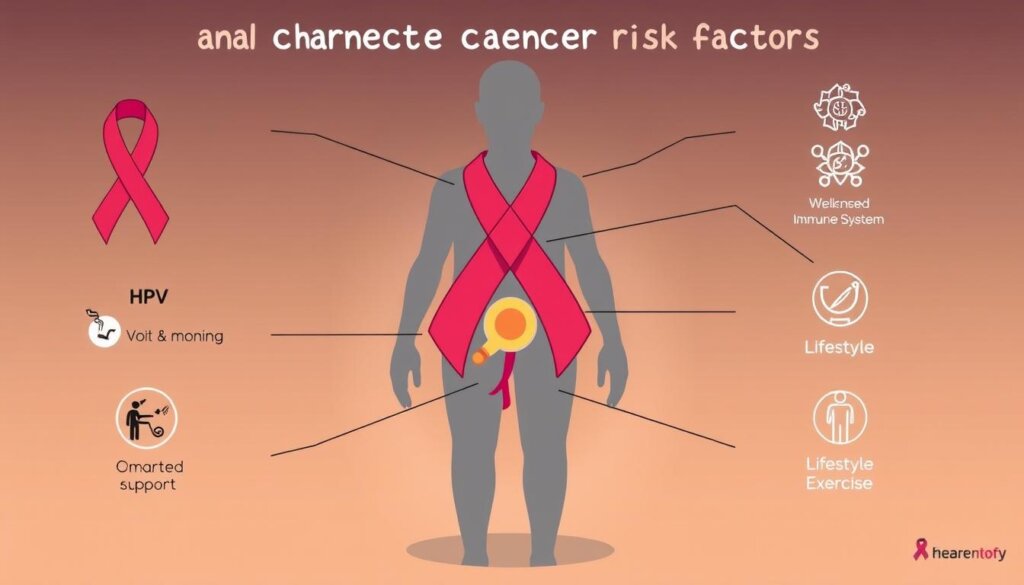
“Vaccination against HPV works best in people who have not been previously infected, highlighting the importance of early vaccination.”
Diagnosis and Staging
Doctors use a digital rectal exam to check for abnormalities during a physical exam. They might also take a biopsy to analyze a tissue sample. Tests like MRI, endorectal ultrasound, and CT scans help find the tumor’s size and location.
These tests also check if the cancer has spread to other parts of the body. This process is called staging.
Evaluating the Condition
Anal cancer stages range from I to IV. Lower numbers mean less spread, while higher numbers mean more. The American Joint Committee on Cancer (AJCC) TNM system is used for staging.
This system looks at tumor size, lymph node involvement, and distant metastasis. The latest AJCC staging system has categories like IA, IIA, IIB, IIIA, IIIB, IIIC, and IV.
Stage I has a tumor no bigger than 2 cm, without lymph node or distant spread. Stage IV has cancer that has spread to nearby and distant organs. The system also includes categories like TX, T0, and NX for more detailed staging.
Staging is done through clinical exams, biopsies, and imaging tests. After surgery, pathologic staging examines the removed tissue. Knowing the stage helps plan treatment and understand survival chances.
Chemotherapy and radiation therapy are often used together to kill cancer cells. Surgery may remove the cancer and some healthy tissue for small cancers. For bigger cancers, surgeries like APR may be needed.
Chemotherapy alone is used for cancer that has spread. Immunotherapy may be considered in some cases. Palliative care aims to improve quality of life for cancer patients.
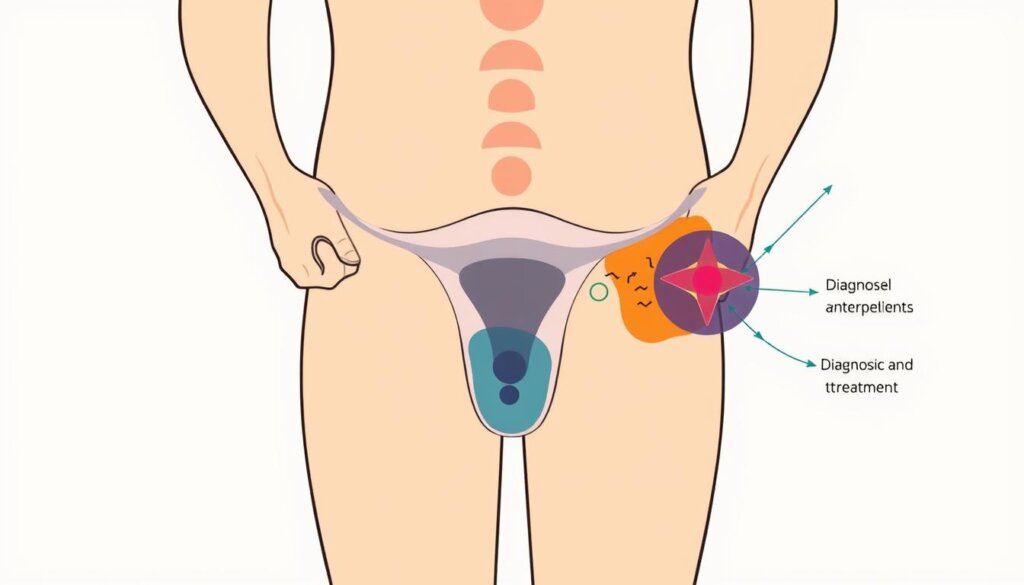
Anal Cancer Treatment Options
Anal cancer needs a special treatment plan. The main treatments are radiation therapy and chemotherapy, or chemoradiation. This combo aims to shrink or remove the tumor without surgery.
Surgery might be needed for early tumors or if cancer comes back after chemoradiation. The right treatment depends on the cancer’s type and stage, as well as the patient’s health and wishes.
Treatment Option | Applicability |
|---|---|
Chemoradiation | The standard treatment for anal cancers that cannot be removed without harming the anal sphincter. Also used for stages IIIA, IIIB, and IIIC anal cancers. |
Surgery (local resection) | Recommended for small tumors in stages I and II that do not involve the sphincter muscle, typically less than 2 centimeters or 1 inch. |
Chemotherapy | Used to control the disease and relieve symptoms in stage IV anal cancer where the cancer has spread to distant organs. |
Radiation Therapy | Combined with chemotherapy (chemoradiation) as the standard treatment for anal cancers. |
For patients with recurrent anal cancer, treatment plans might change based on the first treatment. HIV-infected patients with anal cancer usually get similar treatments but with extra care for those with advanced HIV.
Anal melanoma is usually treated with surgery. Early stages might involve a local excision, while advanced cases might require more extensive surgery, such as abdominoperineal resection (APR).
“The specific treatment plan for anal cancer will depend on factors such as the type and stage of the cancer, as well as the individual patient’s overall health and preferences.”
Radiation Therapy for Anal Cancer
Radiation therapy is key in treating anal cancer. It can be given from outside the body or inside through brachytherapy. This method places radioactive material close to the tumor. New techniques like IMRT help target the cancer better and protect healthy tissue.
Most anal cancer treatments involve radiation. At MSK, experts treat many patients with this method. Common side effects include diarrhea, pain, and skin burns. It can also affect fertility and sexual health.
Radiation Therapy for Anal Cancer | Key Facts |
|---|---|
External Beam Radiation | – Uses a machine to direct high-energy x-rays at the tumor – Can be combined with chemotherapy for advanced anal cancer |
Brachytherapy | – Involves placing radioactive material directly in or near the cancer – Can be used alone or in combination with external beam radiation |
IMRT (Intensity-Modulated Radiation Therapy) | – Advanced radiation technique that helps target the cancer while sparing healthy tissue – Reduces side effects compared to traditional radiation therapy |
While radiation therapy is effective, it has side effects. It’s important to work with your healthcare team to manage them. Thanks to new techniques, this treatment is getting better for anal cancer patients.
Chemotherapy for Anal Cancer
Chemotherapy is key in treating anal cancer. It’s often paired with radiation therapy, called chemoradiation. The drugs are given through an IV, starting the same day as radiation. This combo is more effective than radiation alone for many patients.
The main drugs used are 5-fluorouracil (5-FU) and mitomycin. For some, 5-FU is used with radiation, especially for older or sensitive patients. Other options include carboplatin with paclitaxel, and 5-FU with cisplatin, oxaliplatin, leucovorin, and 5-FU combinations.
Chemotherapy Regimens for Anal Cancer | Frequency of Use |
|---|---|
Fluorouracil (5-FU) and mitomycin | Most common |
Carboplatin and paclitaxel | Alternative option |
Capecitabine and mitomycin | Alternative option |
Fluorouracil and cisplatin | Alternative option |
Side effects of chemotherapy include nausea, vomiting, hair loss, and diarrhea. Mouth sores and nerve damage are also common. Most side effects go away after treatment, but some can last forever. It’s important to talk to doctors about side effects.
Chemotherapy is used with radiation for early-stage anal cancer. Sometimes, it’s given after surgery to prevent cancer from coming back. For advanced cancer, chemotherapy helps control the disease and ease symptoms.
“Chemotherapy is a crucial component of anal cancer treatment, often used in combination with radiation therapy to achieve the best outcomes for patients.”
Anal cancer is rare, making up 1-2% of gastrointestinal cancers. It’s more common in people who have had anal intercourse. Patients may feel nauseous, tired, and have low blood counts from chemotherapy. About 80-85% of patients get chemotherapy and radiation together.
Surgical Treatment for Anal Cancer
Surgery is sometimes needed for anal cancer, even when radiation and chemotherapy are used. Surgery is not always the first choice but may be needed based on the tumor’s type and location.
For small, early-stage cancers, a local resection might be done. This is a less invasive way to remove the affected area. It’s effective when the cancer hasn’t spread far.
For more advanced cancers, a bigger abdominoperineal resection (APR) might be needed. This surgery removes the anus, rectum, and part of the colon. It often leads to a permanent colostomy. This can greatly affect a patient’s life, including sexual function and the need for ongoing stoma care.
“A stoma nurse can provide invaluable support and education to help patients adapt to life with a colostomy following anal cancer surgery.”
Surgery is usually chosen when chemoradiation doesn’t work or if the patient can’t have radiation because of past pelvic radiation. The choice to have surgery is made carefully. It’s weighed against the risks and long-term effects.
For those looking for help and support with anal cancer treatment and living with it, the Macmillan Cancer Support helpline is available. Call 0808 808 00 00 every day from 8 am to 8 pm.
Conclusion
Anal cancer is rare but serious. It needs quick diagnosis and treatment. About 1 in 600 people will get it, with more women than men.
Screening tests and knowing symptoms early can help. Treatments like chemoradiation and surgery are also key.
There’s no sure way to prevent anal cancer. But avoiding risks can help. This includes not smoking, avoiding anal sex, and staying away from HPV and HIV infections.
HPV vaccines can also help. They target types linked to cervical cancer. This can lower the risk of anal cancer.
People at high risk should be screened. But screenings don’t work for everyone.
With the right care, many can live long and well. Finding and treating early signs can stop cancer.
Knowing the risks and options can help you. Early action is key if you need it.
FAQ
What is anal cancer?
Anal cancer is a rare but serious cancer. It happens in the tissues of the anal canal. This is the short tube at the end of the rectum where stool passes out.
What are the common symptoms of anal cancer?
Symptoms include rectal bleeding and blood in the stool. You might also feel anal pain or discomfort. A mass or growth in the anal canal is another sign.
Anal itching and needing to use the bathroom more often are also symptoms.
What causes anal cancer?
The main cause is infection with the human papillomavirus (HPV). This is a sexually transmitted virus. Other risk factors include having many sexual partners and engaging in anal sex.
Having a weakened immune system and smoking also increase the risk.
How is anal cancer diagnosed?
Doctors use a physical exam and a digital rectal exam to start. They might also do a biopsy. Other tests include MRI, endorectal ultrasound, and CT scans.
These tests help find out how far the cancer has spread.
What are the treatment options for anal cancer?
Treatments include radiation therapy and chemotherapy together (chemoradiation). Surgery might be needed for early-stage tumors or if the cancer doesn’t go away after chemoradiation.
How does radiation therapy work for anal cancer?
Radiation therapy is key in treating anal cancer. It can be given from outside the body or placed inside through brachytherapy. New techniques like IMRT help target the cancer better while protecting healthy tissue.
How does chemotherapy work for anal cancer?
Chemotherapy is used with radiation therapy in chemoradiation. The drugs are given through an IV. Radiation starts on the same day as the first chemotherapy cycle.
When is surgery used to treat anal cancer?
Surgery is used for early-stage tumors or if chemoradiation doesn’t work. A local resection might be done to remove the affected area.
For more serious cases, an abdomino-perineal resection might be needed. This involves removing the anus, rectum, and part of the colon.
